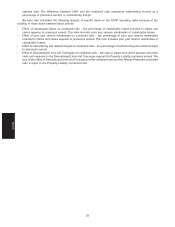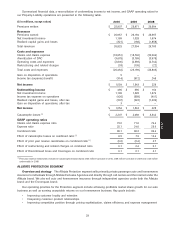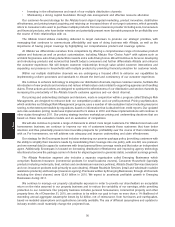Allstate 2011 Annual Report Download - page 117
Download and view the complete annual report
Please find page 117 of the 2011 Allstate annual report below. You can navigate through the pages in the report by either clicking on the pages listed below, or by using the keyword search tool below to find specific information within the annual report.-
 1
1 -
 2
2 -
 3
3 -
 4
4 -
 5
5 -
 6
6 -
 7
7 -
 8
8 -
 9
9 -
 10
10 -
 11
11 -
 12
12 -
 13
13 -
 14
14 -
 15
15 -
 16
16 -
 17
17 -
 18
18 -
 19
19 -
 20
20 -
 21
21 -
 22
22 -
 23
23 -
 24
24 -
 25
25 -
 26
26 -
 27
27 -
 28
28 -
 29
29 -
 30
30 -
 31
31 -
 32
32 -
 33
33 -
 34
34 -
 35
35 -
 36
36 -
 37
37 -
 38
38 -
 39
39 -
 40
40 -
 41
41 -
 42
42 -
 43
43 -
 44
44 -
 45
45 -
 46
46 -
 47
47 -
 48
48 -
 49
49 -
 50
50 -
 51
51 -
 52
52 -
 53
53 -
 54
54 -
 55
55 -
 56
56 -
 57
57 -
 58
58 -
 59
59 -
 60
60 -
 61
61 -
 62
62 -
 63
63 -
 64
64 -
 65
65 -
 66
66 -
 67
67 -
 68
68 -
 69
69 -
 70
70 -
 71
71 -
 72
72 -
 73
73 -
 74
74 -
 75
75 -
 76
76 -
 77
77 -
 78
78 -
 79
79 -
 80
80 -
 81
81 -
 82
82 -
 83
83 -
 84
84 -
 85
85 -
 86
86 -
 87
87 -
 88
88 -
 89
89 -
 90
90 -
 91
91 -
 92
92 -
 93
93 -
 94
94 -
 95
95 -
 96
96 -
 97
97 -
 98
98 -
 99
99 -
 100
100 -
 101
101 -
 102
102 -
 103
103 -
 104
104 -
 105
105 -
 106
106 -
 107
107 -
 108
108 -
 109
109 -
 110
110 -
 111
111 -
 112
112 -
 113
113 -
 114
114 -
 115
115 -
 116
116 -
 117
117 -
 118
118 -
 119
119 -
 120
120 -
 121
121 -
 122
122 -
 123
123 -
 124
124 -
 125
125 -
 126
126 -
 127
127 -
 128
128 -
 129
129 -
 130
130 -
 131
131 -
 132
132 -
 133
133 -
 134
134 -
 135
135 -
 136
136 -
 137
137 -
 138
138 -
 139
139 -
 140
140 -
 141
141 -
 142
142 -
 143
143 -
 144
144 -
 145
145 -
 146
146 -
 147
147 -
 148
148 -
 149
149 -
 150
150 -
 151
151 -
 152
152 -
 153
153 -
 154
154 -
 155
155 -
 156
156 -
 157
157 -
 158
158 -
 159
159 -
 160
160 -
 161
161 -
 162
162 -
 163
163 -
 164
164 -
 165
165 -
 166
166 -
 167
167 -
 168
168 -
 169
169 -
 170
170 -
 171
171 -
 172
172 -
 173
173 -
 174
174 -
 175
175 -
 176
176 -
 177
177 -
 178
178 -
 179
179 -
 180
180 -
 181
181 -
 182
182 -
 183
183 -
 184
184 -
 185
185 -
 186
186 -
 187
187 -
 188
188 -
 189
189 -
 190
190 -
 191
191 -
 192
192 -
 193
193 -
 194
194 -
 195
195 -
 196
196 -
 197
197 -
 198
198 -
 199
199 -
 200
200 -
 201
201 -
 202
202 -
 203
203 -
 204
204 -
 205
205 -
 206
206 -
 207
207 -
 208
208 -
 209
209 -
 210
210 -
 211
211 -
 212
212 -
 213
213 -
 214
214 -
 215
215 -
 216
216 -
 217
217 -
 218
218 -
 219
219 -
 220
220 -
 221
221 -
 222
222 -
 223
223 -
 224
224 -
 225
225 -
 226
226 -
 227
227 -
 228
228 -
 229
229 -
 230
230 -
 231
231 -
 232
232 -
 233
233 -
 234
234 -
 235
235 -
 236
236 -
 237
237 -
 238
238 -
 239
239 -
 240
240 -
 241
241 -
 242
242 -
 243
243 -
 244
244 -
 245
245 -
 246
246 -
 247
247 -
 248
248 -
 249
249 -
 250
250 -
 251
251 -
 252
252 -
 253
253 -
 254
254 -
 255
255 -
 256
256 -
 257
257 -
 258
258 -
 259
259 -
 260
260 -
 261
261 -
 262
262 -
 263
263 -
 264
264 -
 265
265 -
 266
266 -
 267
267 -
 268
268 -
 269
269 -
 270
270 -
 271
271 -
 272
272 -
 273
273 -
 274
274 -
 275
275 -
 276
276
 |
 |

expenses and catastrophe losses, including prior year reestimates for catastrophes, partially offset by average earned
premiums increasing faster than loss costs. Other personal lines underwriting income increased 6.7% to an
underwriting income of $95 million in 2010 from an underwriting income of $89 million in 2009 primarily due to lower
unfavorable reserve reestimates. For further discussion and quantification of the impact of reserve estimates and
assumptions, see the Application of Critical Accounting Estimates and Property-Liability Claims and Claims Expense
Reserves sections of the MD&A.
Allstate Protection experienced underwriting income of $1.03 billion during 2009 compared to $189 million in 2008
primarily due to decreases in homeowners underwriting loss, partially offset by decreases in standard auto underwriting
income. Homeowners underwriting loss decreased 89.4% to an underwriting loss of $125 million in 2009 from an
underwriting loss of $1.18 billion in 2008, primarily due to lower catastrophes losses, partially offset by increases in
homeowner claim frequency and claim severities excluding catastrophes. Standard auto underwriting income
decreased 20.9% to $987 million in 2009 from $1.25 billion in 2008, primarily due to increases in auto claim frequency
and lower premiums earned.
Catastrophe losses in 2010 were $2.21 billion as detailed in the table below. This compares to catastrophe losses
in 2009 of $2.07 billion.
We define a ‘‘catastrophe’’ as an event that produces pre-tax losses before reinsurance in excess of $1 million and
involves multiple first party policyholders, or an event that produces a number of claims in excess of a preset, per-event
threshold of average claims in a specific area, occurring within a certain amount of time following the event.
Catastrophes are caused by various natural events including high winds, winter storms, tornadoes, hailstorms, wildfires,
tropical storms, hurricanes, earthquakes and volcanoes. We are also exposed to man-made catastrophic events, such
as certain acts of terrorism or industrial accidents. The nature and level of catastrophes in any future period cannot be
reliably predicted.
Catastrophe losses related to events that occurred by the size of the event are shown in the following table.
2010
($ in millions)
Claims Combined Average
Number and claims ratio catastrophe
of events expense impact loss per event
Size of catastrophe
Greater than $250 million 1 1.1% $ 355 16.1% 1.4 $ 355
$101 million to $250 million 4 4.4 610 27.6 2.3 153
$50 million to $100 million 8 8.9 511 23.2 2.0 64
Less than $50 million 77 85.6 894 40.5 3.4 12
Total 90 100.0% 2,370 107.4 9.1 26
Prior year reserve reestimates (163) (7.4) (0.6)
Total catastrophe losses $ 2,207 100.0% 8.5
Catastrophe losses incurred by the type of event are shown in the following table.
2010 2009 2008
($ in millions)
Number Number Number
of events of events of events
Hurricanes/Tropical storms $ 15 1 $ 48 1 $ 1,381 5
Tornadoes 174 7 384 4 628 19
Wind/Hail 1,908 74 1,561 67 960 81
Wildfires 15 1 83 5 169 9
Other events 258 7 162 5 79 9
Prior year reserve reestimates (163) (169) 125
Total catastrophe losses $ 2,207 90 $ 2,069 82 $ 3,342 123
37
MD&A
